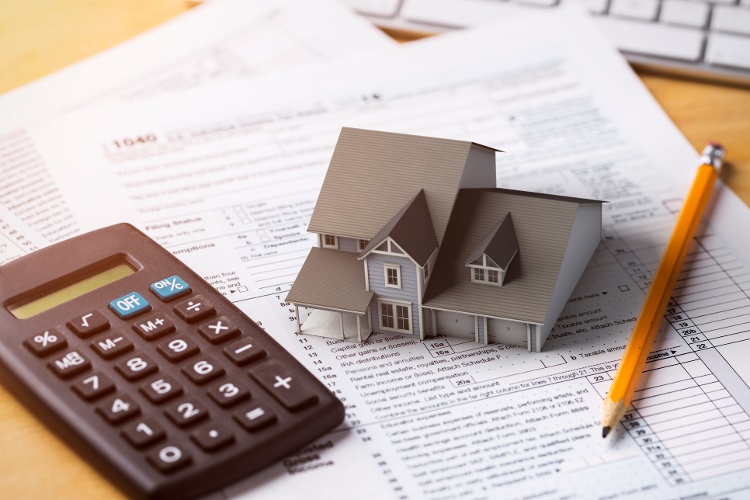They say that value is in the eye of the beholder.
While that’s absolutely true when talking about the potential of income-producing real estate, it doesn’t mean you should have to pay more for a rental property than its fair market value.
Here’s how to do a comparative market analysis (CMA) to help learn what the current market value of a property really is, along with two creative ways to use a CMA to your advantage.
What Is a Comparative Market Analysis?
A comparative market analysis (CMA) analyzes the sales activity of similar properties in the same neighborhood or market area. Real estate agents and brokers prepare CMAs for free for their clients, normally using data from the MLS (multiple listing service).
The CMA provides a snapshot of what a property is worth at a given point in time. In dynamic real estate markets where property values change quickly, a CMA can quickly become outdated, sometimes after only a few weeks.
Because no two properties are exactly the same, a CMA includes price adjustments to the ‘subject property’ – which is another name for the property being purchased or listed for sale.
These adjustments create a more accurate, apples-to-apples comparison that is then used as a guide for buyers and sellers to determine the fair market value of the property at a specific point in time.

What Makes a Good Comparable?
The accuracy of a comparative market analysis largely depends on the properties selected for comparison to the subject property. Choosing the wrong comps could mean overpaying if you’re the home buyer or leaving money on the table if you’re the seller.
Here are four factors to consider when selecting comparable properties:
- Sales prices of comparables that are significantly higher or lower than the norm should be discarded. There’s usually a reason for wide variations, such as a discounted all-cash deal or a credit from the seller to the buyer for repairs.
- Comparable properties should be as close to the subject property as possible, ideally in the same neighborhood.
- Escrow closing dates of the comps should be as recent as possible since sales data can change quickly in real estate markets that have a lot of activity.
- Characteristics of the comparable properties should match the subject property as closely as possible, to avoid potential errors in value adjustments.
Information Contained in a CMA
Here’s a quick look at the information you can expect to find in a CMA:
- Address of subject property
- Address of comparable properties (usually 3-4 comps)
- Description of each property (elevation, floor plan, beds, baths, parking, etc.)
- Square footage of each property
- Sold prices of each comparable
- Values for adjustments (features comps have but subject does not and vice versa)
- Adjusted sold prices for each comparable
- Value per square foot for each property
- Value of subject property (fair market value)

How to Do a Comparative Market Analysis
There are eight general steps that are followed when creating a comparative market analysis:
Step #1: Collect detailed information for the subject property
- Street address, neighborhood name, city/municipality, county
- Year built/year major improvements were made (if any)
- Lot size
- Total square footage of property
- Number of bedrooms and bathrooms
- Recent updates or renovations (such as a new roof, HVAC, or room addition)
- Condition of interior finishes and fixtures
- Special amenities such as a swimming pool, outside deck, or freestanding garage)
Step #2: Review property tax assessment and previous sales data
- Use local property tax assessment as a guide, but remember that assessed value for tax purposes is not the same as market value for investment purposes
- Look at the MLS printout or listing sheet from when the property was last sold, to review list and final sales price, purchase terms, days on market, and any pricing adjustments prior to the sale
Step #3: Analyze the neighborhood
- Condition of nearby properties on the same block as the subject property compared to other parts of the same neighborhood
- Proximity to transportation, entertainment, shopping, parks, and recreation
- Potential hazards such as trash facilities, industrial parks, railroads, airports, flood and seismic areas, and wildfires
- Elevation or curb appeal issues of the subject property and adjacent properties that may decrease the value of property in the neighborhood

Step #4: Carefully select comparable properties
- Compile a list of the most recent sold, expired, and pending property for sale
- Similar elevation, floor plan, and same number of stories as the subject property
- Number of bedrooms and bathrooms the same as the subject property
- Comps with the same square footage as the subject property, give or take 10%
- Equal school zone ratings if comps are in a different school district than subject
- Similar lot size, lot configuration, and location (corner lot vs. next to greenbelt)
- Year built dates of comparable properties as close as possible to subject property
- Similar features and amenities such as garage, pool, outside deck, clubhouse or community park, and view
Step #5: Determine value adjustments for the comparable properties
- Adjust the value of each comparable to show if the comp is better or worse than the subject property
- Comp adjustments can be made for any variable including bedrooms and baths, square footage and lot size, location, year built, and amenities
- Prices of comparable properties are adjusted downward if they are better than the subject property and upward if the comparable is worse than the subject property
- Value placed on the adjustments varies from market to market based on judgment and custom
Step #6: Calculate average price per square foot of each comp
- Divide the selling price of each comp by the square footage of the comp
- Determine the average selling price per square foot for the comparable properties
Step #7: Compile and compare
- Multiply the average price per square foot of the comps by the square footage of the subject property
- Compare the CMA market value of the subject property with online resources such as Zillow Zestimate
Step #8: View the property
- Visit the property in person or have a member of your local real estate team “walk the property” inside and out
- Long-distance real estate investors can ask for photos, videos, and aerial drone footage
- Google Street View is also an option, although views may be outdated

Example of a Single-family Home CMA
Here’s an example of how to put together a basic CMA for a single-family house.
Our subject property is a 1,500 square foot, 3-bed, 2-bath single-level home listed for sale at $150,000 that was built 10 years ago.
How does the asking price compare to similar recent sales in the neighborhood?
We’ll begin by selecting four recent sales comps for houses that are most similar to the subject property:
- House 1: 1,500 square feet sold for $150,000 ($100 per square foot)
- House 2: 1,500 square feet sold for $160,000 – value adjusted downward to $140,000 to allow for a more recent construction date ($93 per square foot)
- House 3: 1,600 square feet sold for $150,000 – value adjusted upward to $165,000 to allow for an old roof needing to be replaced ($103 per square foot)
- House 4: 1,400 square feet sold for $160,000 ($114 per square foot)
Next, we’ll calculate the average price per square foot of our four comparables, taking into account the value adjustments made:
- $100 + $93 + $103 + $114 = $410 / 4 comps = $102.50 per square foot average
Then, we can determine the fair market value of the subject property:
- Subject property market value based on CMA: 1,500 square feet x $102.50 average comp price per square foot = $153,750
According to our quick CMA, the asking price of $150,000 is slightly less than the fair market value of $153,750.
Creative Ways to Use a CMA
In some ways, a CMA contains similar data to what is found on a professional property appraisal ordered by a lender, although on a more basic level.
Before making an offer on a property, a CMA can give you a good idea of what the property might appraise. That way, you’ll be able to avoid overbidding or losing out on a good deal because another investor offered a more realistic purchase price.
In addition to determining fair market value, there are a couple of creative ways to use a CMA:
- Ordering a CMA from several different real estate agents is a good way to find an agent that really knows the local market well
- Once you connect with an agent, ask them to reach out to other agents with property waiting to close, to get inside information on items like actual sales price, appraisal, and concessions
Final Thoughts
Doing a CMA the right way gives real estate investors a better idea of the fair market value of a property at a specific point in time. An accurate comparative market analysis lets a buyer know if the asking price is too high, and a seller know if the listing price is fair.
In active real estate markets, where prices are quickly moving up or down, the fair market value of a property determined by the CMA can become out of date in just a few weeks.
For example, a real estate market shifting from a seller’s market to a buyer’s market forces prices down when there’s more inventory on the market.









